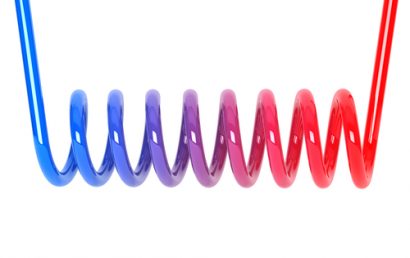Injection Molded Parts Require Proper EMI/RFI Shielding
Numerous parts are being injection molded today. They span a variety of specialty, consumer, and industrial markets and include items like military and medical electronic components, mobile phone and laptop cases, and more. This vast usage assigns increasing importance to RFI and EMI shielding. Proper injection molded component part shielding helps ensure reliable, continued performance and is necessary to meet many regulatory requirements.
Plastic parts can’t provide their own shielding because they are nonconductive. But EMI/RFI shielding for injection molded parts works two ways: Its secondary purpose prevents outside waves from interfering with and penetrating the operation of the device. First and foremost, however, this shielding prevents RF and EM from being emitted from injection molded case-housed devices.
RFI And EMI – What’s the Difference?
Not all EMI (electromagnetic interference) is RFI. But, all RFI (radiofrequency interference) is EMI. Though there are specific differences to note between the two, they can be interchangeable, to an extent.
Electronic or electrical disturbances are referred to by EMI. They can be man-made or a naturally occurring phenomenon. Degradation of service, interruption of service, and other undesirable effects can be caused by this disturbance.
Electrical distortions fall between certain frequencies. The difference between RFI and EMI has a lot to do with these frequencies. At any frequency shared by ranges of radio transmission, RFI can be found.
Conductive Plastic?
With certain additives included, some plastics can be made conductive. The process used to do this is in limited use, however, because it is very costly. Ordinarily, plastic cannot provide RFI/EMI shielding because it is, in and of itself, conductive. This shielding prevents your device from causing interference or prevents interference with the actual device.
Electrolytic Plating and Electroless Plating
Electroless plating, when adding conductive coatings for shielding, is one of the first methods. This process only affects the surface layer of the parts with the resin’s material properties remaining unchanged, overall.
For applications where it is necessary to use a thicker conductive coating, electrolytic plating is used. When enhancing a part’s RFI shielding, it comes after electroless plating and provides – over the initial layer – additional metals such as tin, silver, nickel, gold, copper, and chrome.
Types of RFI/EMI Shielding
Commonly selected for plating, here are some resins currently being used:
- PS (polystyrene)
- PPA (polyphthalamide)
- PPO (polyphenylene oxide)
- PEI (polyether imide)
- PC (polycarbonate)
- PBT (polybutylene terephthalate)
- Poly Aryl Amide
- PC/PBT
- PC/ABS blend
- Nylon
- ABS (Acrylonitrile butadiene styrene)
Plating difficulties can occur with the following resins:
- PTFE (Teflon)
- Polypropylene
- Polyamide
- Polyethylene
- PEEK
- Liquid crystal polymer
During the engineering stage, one of the most crucial decisions faced deals with the specific part needing shielding and the correct resin to use. Plateable resins are those which can undergo the plating process. Non-plateable resins refer to resins that are not capable of undergoing the process. However, if the latter are mixed first through a custom engineered process, they can go through an RFI shielding plating process.
Could Your Company Make Good Use of EMI/RFI Shielding?
You may already be convinced that EMI/RFI shielding is something your business could make good use of. You may not, however, be aware of which resins to use. There’s no one better to turn to in a situation like this than the experts at A&A Coatings.
Chances are, in your industry, we are already helping your competitors. It’s time to make the absolute most of today’s protective coatings at your place of business. Contact us today for more information.



